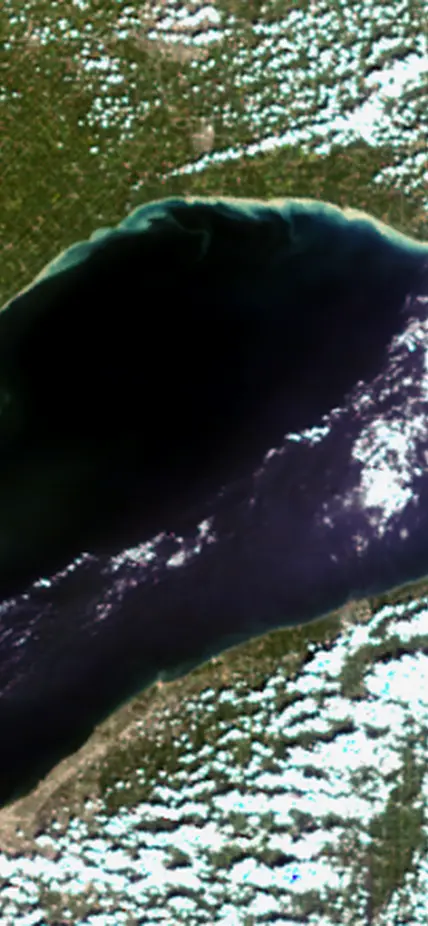Washington, D.C.—Lake Erie just can’t catch a break. The lake has experienced harmful algal blooms and severe oxygen-depleted “dead zones” for years, but now a team of researchers led by Carnegie’s Anna Michalak and Yuntao Zhou has shown that the widespread drought in 2012 was associated with the largest dead zone since at least the mid-1980s.
Until now, the size of the dead zone each summer and the factors explaining the variability from year to year have been elusive. Using 28 years of data collected in and around the lake, the team was able to “measure” the size of the dead zone each summer and identify factors that explain the year-to-year variability for the first time. They found that the 2012 drought, with extremely low water inflow from tributaries, was associated with a record-breaking dead zone in the lake, and that meteorological factors together with agricultural practices explain why these events vary annually. Previous studies have focused on phosphorous from agricultural runoff as the primary driver of the lake’s dead zones, but this analysis shows that the inflow of water from tributaries is actually the largest explanatory factor. The results are published in Environmental Science & Technology.
“Fresh water dead zones—areas depleted of oxygen—result when massive amounts of phosphorus and nitrogen are added to the water, often from fertilizer runoff from agriculture,” explained Michalak. “The excessive nutrients promote excessive growth of algae. When the algae die and decompose, the oxygen in the water gets used up and can drop to levels too low for aquatic life to survive. This happens especially when the water is stratified, with warm water layered on top of cold water, keeping new oxygen from reaching the bottom of the lake.”
The revelation about the size of the dead zone in 2012 comes on the heels of the record-setting harmful algal bloom that occurred in 2011, and the closure of the Toledo water supply in August 2014 due to high concentrations of Cyanobacteria-produced toxins at the city’s water intake.
Whereas the record-setting dead-zone event occurred during the 2012 drought, the 2011 record-setting algal bloom was attributed to intense spring storms and various other confounding factors.
The team looked at data obtained over 28 years, from 1985 to 2012, and constructed a statistical model that analyzed factors such as agricultural nutrient loading and meteorological conditions. The record-low tributary flow into the lake was found to be the predominant explanatory factor for the 2012 dead zone, while the team estimated that the 2011 bloom was actually associated with a rather small dead zone, despite the massive bloom.
“Interestingly, we found that increases in water inflow are associated with smaller dead zones, but greater algal blooms,” remarked Michalak. “In fact, water inflow from rivers alone explains over a third of the year-to-year variability in the size of dead zone, and the mechanisms behind this require further investigation. When you add three other factors – phosphorus loading into the lake in May to July, northwesterly winds in June that push the nutrient-rich water from the western basin to the central basin, and wind speeds in July that affect the stratification during the hypoxic season, you can explain over 80% of the variability that the lake has experienced since 1985.”
This finding has important implications for how to manage the lake: “Meteorological conditions need to be considered in addition to nutrient runoff when developing strategies for managing Lake Erie, especially as extreme rain and water flows—whether extremely high as in 2011 or extremely low as in 2012—become more common as climate changes.”
___________________
This material is based upon work supported by the National Science Foundation Water Sustainability and Climate program under Grants No. 1039043, 1313897, and 0644648.
The Department of Global Ecology was established in 2002 to help build the scientific foundations for a sustainable future. The department is located on the campus of Stanford University, but is an independent research organization funded by the Carnegie Institution. Its scientists conduct basic research on a wide range of large-scale environmental issues, including climate change, ocean acidification, biological invasions, and changes in biodiversity.
